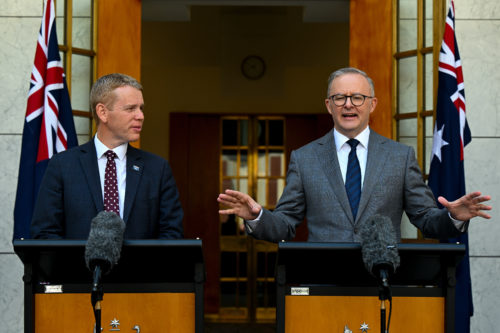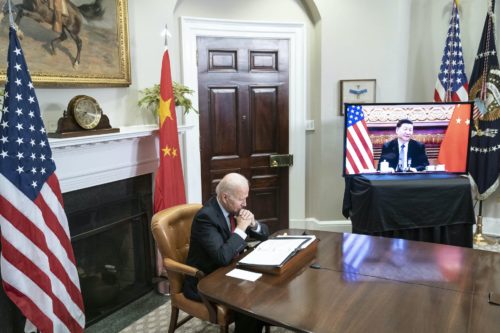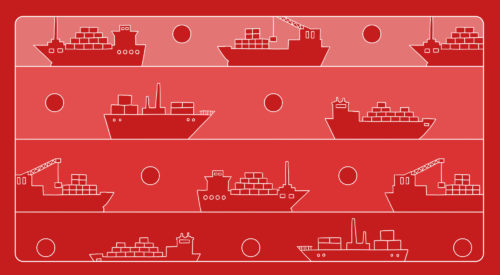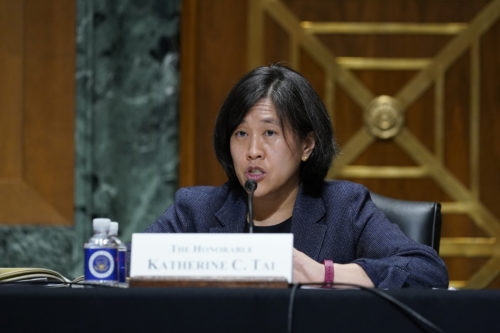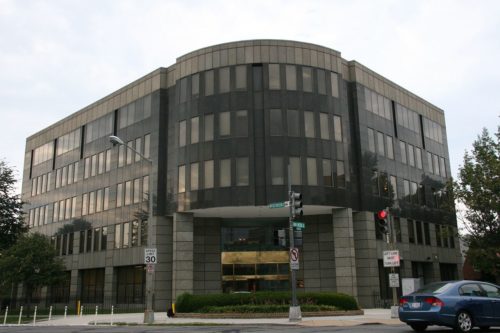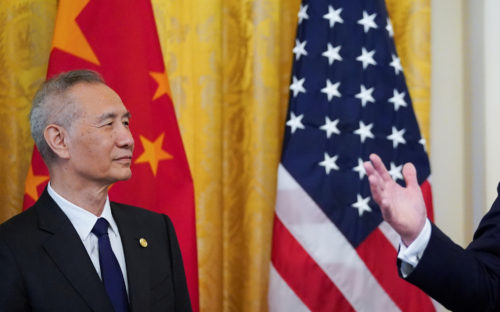The phase one U.S.-China trade deal signing show
Trump got his purchase commitments, and China successfully avoided making serious concessions on industrial subsidies, changes to regulatory laws that go beyond high-level commitments, and any commitment to stop cyber espionage of any kind.
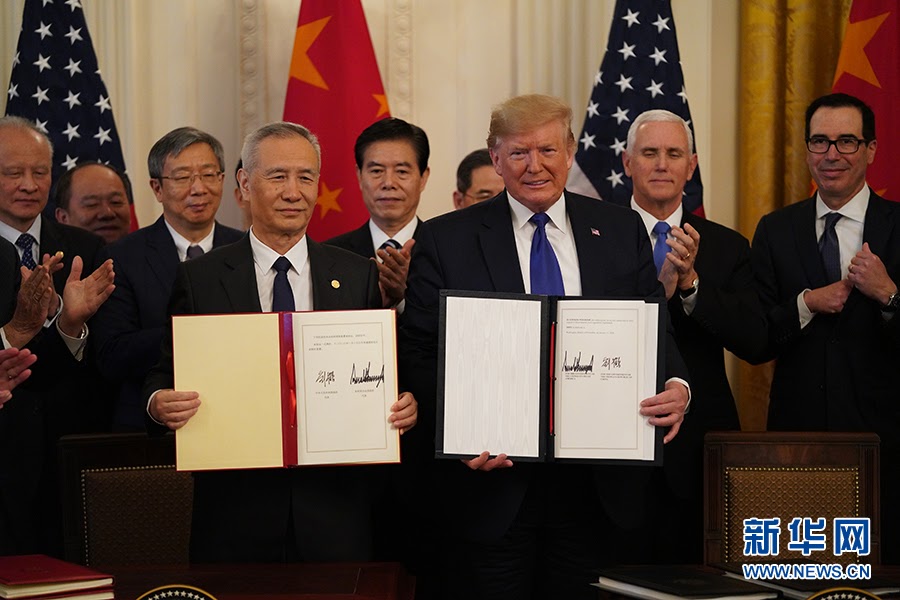
A signing ceremony for a phase one U.S.-China trade deal was held at the White House today. Chinese Vice-Premier Liú Hè 刘鹤 attended and put his name on paper alongside Trump’s, sparing Xí Jìnpíng 习近平 any personal embarrassment if the deal in China is ever perceived to be a failure or show weakness.
Liu He spent most of the ceremony standing awkwardly behind Trump as the president turned the event into a self-congratulatory awards show. For over half an hour, Trump rambled and thanked dozens of “fantastic” people in the audience by name for largely unspecified, “great” jobs that they had done.
Many of those in the room seemed to have been invited purely because they were allies of the president, not because they had anything to do with trade with China. A few of them were associated with private companies that likely have large stakes in the Chinese market. Henry Kissinger, sitting in the front row right in front of Trump, was not among the many dozens of people he thanked by name.
Perhaps Trump’s only remark worth noting is: “We don’t expect to have a Phase Three.” This means that all the most difficult issues will have to be resolved in a phase two agreement, which would probably not come before the November elections, if the excruciatingly long process to get to phase one is any indication.
From the self-congratulatory tones of Trump, U.S. Treasury Secretary Steven Mnuchin, and U.S. Trade Representative Robert Lighthizer, as well as the amicable talk from Liu He and Chinese ambassador to the U.S. Cuī Tiānkǎi 崔天凯 about their satisfaction with the “mutually beneficial win-win agreement,” it sounds like all negotiating parties are happy to kick the phase two can down the road for now.
Click here to view the official White House video recording of the event.
What’s in the agreement?
Right as the signing ceremony ended, the Office of the United States Trade Representative released a notice of an “Economic and Trade Agreement Between the Government of the United States and the Government of the People’s Republic of China,” which includes the English-language text of the agreement as a 96-page PDF.
A separate page of 16 fact sheets explains the parts of the deal concerning everything from intellectual property to pet food, and from agricultural biotechnology to financial services. The White House also released a bullet point summary of what it considers to be the highlights of the deal.
There are chapters on intellectual property and technology transfer, as well as financial services, currency, and dispute resolution — though for these, as we pointed out yesterday, the devil is in the details and much depends on the as-yet-unreleased Chinese version of the text.
The most important part of the agreement appears to be China’s commitment to purchase $200 billion in American goods over the next two years, as had been reported previously. On pages 6-3 and 6-4 of the text, there is a table detailing the components of that $200 billion, which we have republished below:
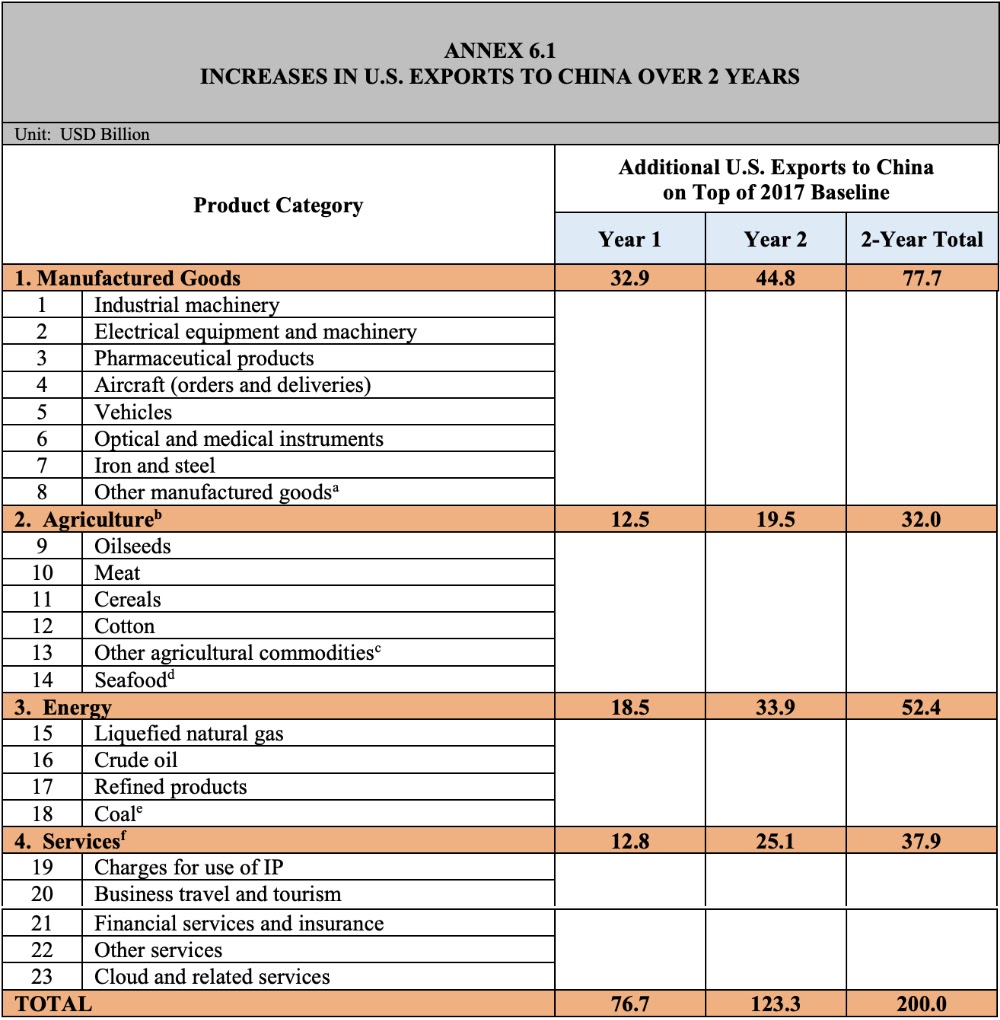
Despite Trump’s focus on “Great Patriot Farmers,” the largest beneficiaries appear to be American manufacturers of industrial goods, at least according to the numbers provided. Energy exports come in second, services in third, and agriculture comes in as the smallest basket of exports to be promoted.
What do the Chinese get from the agreement?
No new tariffs, most importantly. The expectation of a deal in December led to Trump canceling planned tariff increases in that month, and the signing now means that Trump is less likely to increase tariffs later in 2020.
China has also successfully avoided making serious concessions on industrial subsidies, changes to regulatory laws that go beyond high-level commitments, and any commitment to stop cyber espionage of any kind.
Here is a selection of initial reactions and analysis from media outlets, trade experts, and other notable people:
- The agreement “helps calm relations but fails to address issues at the heart of the trade war,” according to a summary by Politico.
- “The pledges [on technology transfer] are much more detailed than conditions Beijing has agreed to in the past. However, the section doesn’t require China to change any law or regulation to fulfill its obligations,” the Wall Street Journal points out (paywall).
- “This is an encouraging first step that should benefit many of our members,” U.S.-China Business Council president Craig Allen wrote in a statement. “But the work isn’t done yet. Implementation of the agreement will be critically important. Moreover, the phase one agreement should be swiftly followed by continued phase two negotiations on remaining issues.”
- “There is really almost nothing new in the currency provisions,” said Brad Setser, a former U.S. Treasury Department official now at the Council on Foreign Relations. “China has agreed to disclose material that it is already disclosing,” he added.
- Joe Biden called the trade deal “vague, weak,” Bloomberg reports (porous paywall). The former vice president, and the leading contender for the Democratic nomination to face off with Trump in the general election, said that it “won’t actually resolve the real issues at the heart of the dispute, including industrial subsidies, support for state-owned enterprises, cybertheft, and other predatory practices in trade and technology.”
—Lucas Niewenhuis

